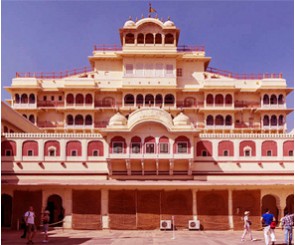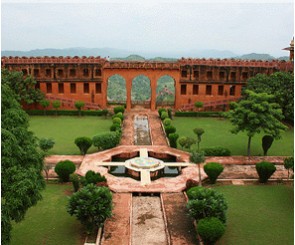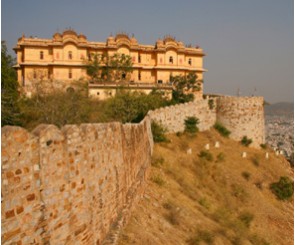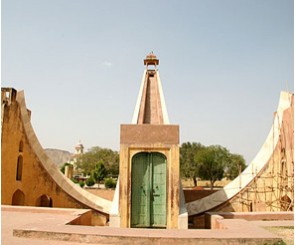Home » Hot Destinations » Jaipur Tour
Jaipur Tour
India's desert capital of jaipur affectionately referred to as the Pink City because of the pink walls and buildings of the old city, lures visitors with its stunning remnants of a bygone era. The most popular Jaipur attractions and places to visit are the ancient palaces and forts, with elaborate architecture that serves as a resplendent reminder of their royal heritage.
Jaipur at a Glance :-
State:- Rajasthan
Best time to Visit Jaipur:- October to March
Languages spoken:- Hindi, English and Rajasthani
Seasons:- Summer (March-June), Winter (November-February), Monsoon (July-September)
Religions:-Hindu, Islamic, Jainism, Sikhism
Temperature:- Summer : (32.4°C to 45°C) & Winter (4.3°C to 22.2°C)
Climate:- Semiarid
Cuisine:- Rajasthani food and Different country foods
- City Palace

Upon visiting the magnificant City Palace, it's easy to see that the royal family of Jaipur was one of the richest in India. The huge complex of courtyards, gardens, and buildings blend both Rajasthani and Mughal architecture. The Peacock Gate is exquisite, and contains an alluring display of detailed workmanship featuring bright peacocks. Today, the royal family lives in the graceful Chandra Mahal (Moon Palace) bordering the courtyard. Also inside the City Palace complex is a museum, art gallery, and interesting displays of royal costumes and old Indian weapons.
- Hawa Mahal

The intricate and fascinating facade of the Palace of the Winds is probably Jaipur's most recognized building. Constructed in 1799, it has five floors that contain rows of small windows and screens. Wind used to flow through the openings, giving the palace its name. However, the wind has now gone from the Wind Palace as most of the windows have been sealed shut. Legend has it that the palace, which overlooks the main street of Jaipur's lively Old City, was built so that the women of the royal household could watch the streets below without being observed.
- Amber Fort

Around half an hour's drive from the city center, like something out of a fairy tale, Amber Fort is set on a hill top overlooking Maota Lake. It was the original home of Rajput royalty until Jaipur city was constructed, and contains a number of breathtaking palaces, halls, gardens, and temples. Inside, the elaborate mirror work adds to the grandeur. The fort entrance is reached by walking up the hill, going in a jeep, or taking a lurching elephant ride. The evening sound and light show, which brings alive the Fort's history, is impressive.
- Jaigarh Fort

The massive Jaigarh Fort was built in 1726 and holds great appeal for military lovers. Flanked by towering gateways and watchtowers, it contains the world's largest cannon on wheels. The cannon has never been fired though, and neither has the fort been captured. As a result the fort has remained intact over its long life, and is very well preserved. Infact, it's one of the best-preserved military structures of medieval India. Jaigarh doesn't have the delicate interiors of Amber Fort, and therefore appears as a real fortress.
- Nahargarh Fort

Nahargarh Fort, also known as Tiger Fort, is perched high on the rugged Aravali Hills overlooking Jaipur city. The fort was built 1734 to help defend the city. It found fame in 2006, after many scenes from the movie Rang De Basanti were filmed there. Nahargarh Fort offers spectacular views, which are best seen at sunset. It also makes a great place for a picnic as there's a cafe on the premises, which serves beer and snacks until 10 p.m. The fort looks particularly attractive at night when it's lit up.
- Jantar Mantar

Jantar Mantar, built by King Jai Singh II between 1727 and 1734, literally means "calculation instrument". More than just a curious collection of sculptures, each structure at the intriguing Jantar Mantar observatory has a specialized astronomical function. There are 14 structures in total, which measure time, predict eclipses, and track stars. The most impressive one is the huge Samrat Yantra sundial. At a height of 90 feet (27 meters), it has a shadow that moves roughly the width of a person's hand every minute.







